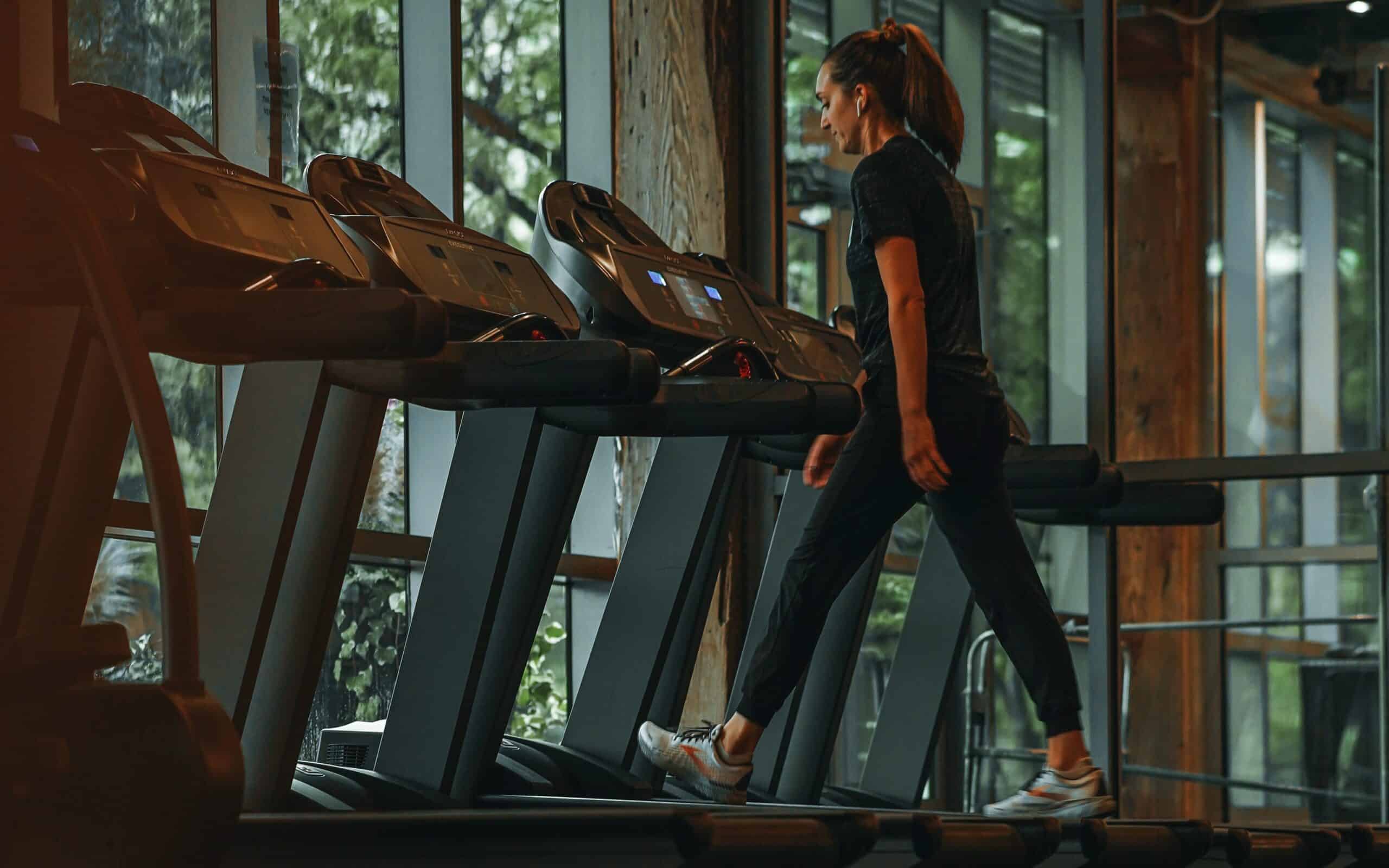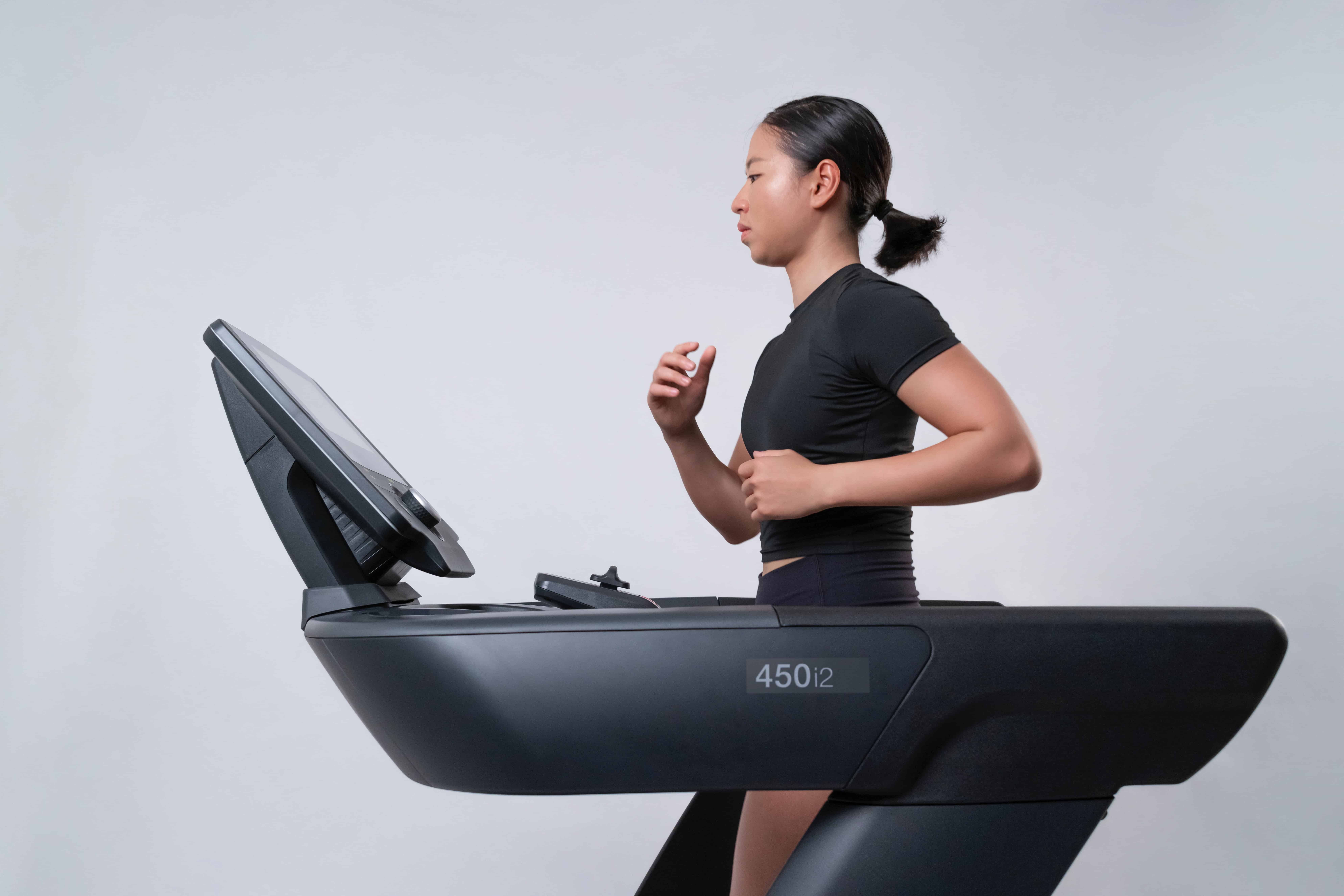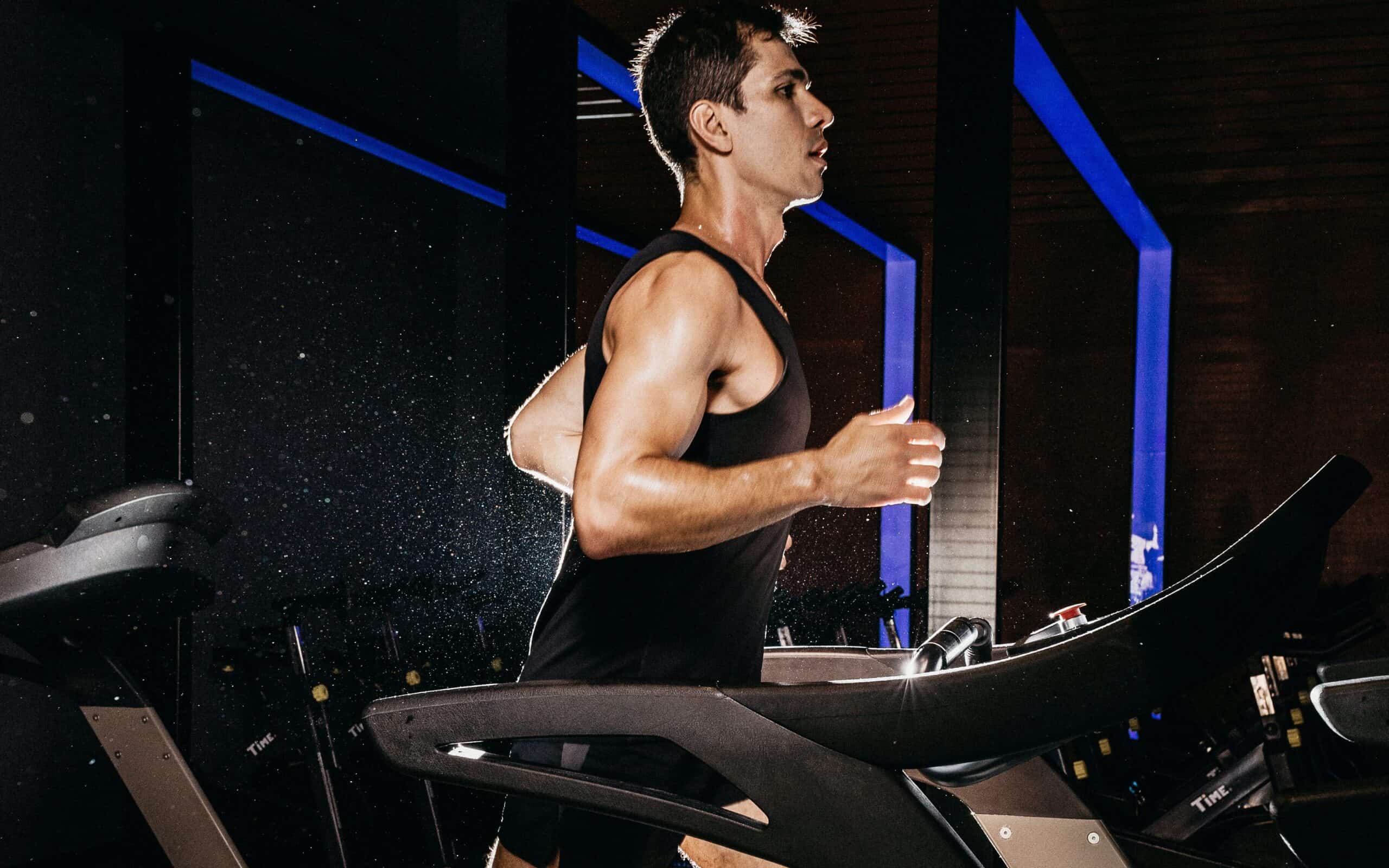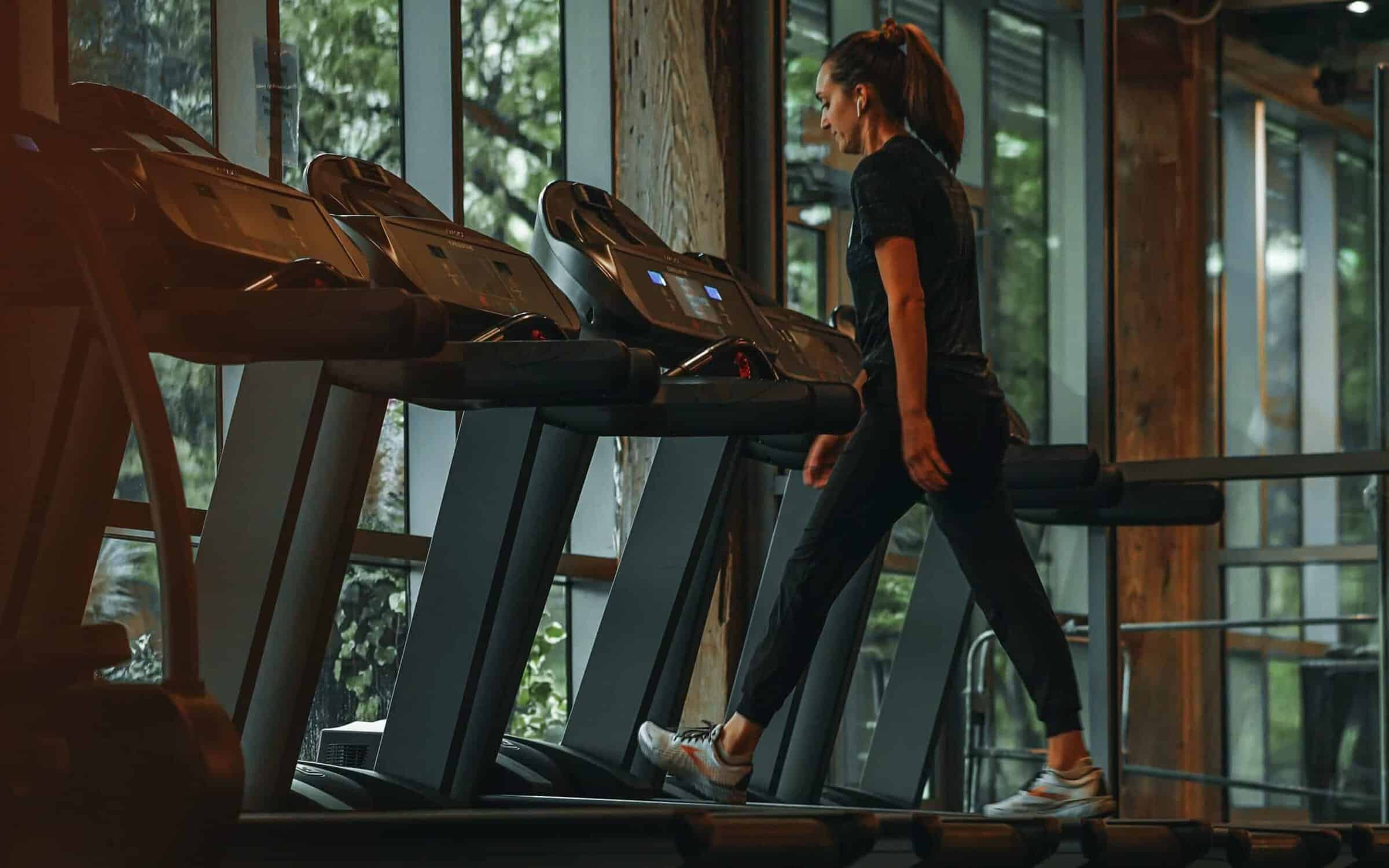Are you tired of battling the elements every time you want to go for a run outside? Perhaps the heat or snow is starting to get to you – or maybe it’s tough to schedule outdoor runs amidst a million other life commitments (parents – we’re looking at you!).If that’s the case, the treadmill should be your go-to for squeezing in your runs. If you’re thinking about training for a half marathon or marathon training treadmill, you might think that the runs are too long (and the training plans too grueling) to be executed on a treadmill.
However, that’s far from the truth. In fact, the treadmill is one of the best tools you can use in your training, as it can allow for more flexibility and variety in your everyday running routine.
Here are some training tips to help you train for a race of any length on the good old dreadmill – we mean, treadmill – so that you can run a PR at your next big event.
Can You Train for a Marathon on a Treadmill?

So, can you train for a marathon solely on a treadmill?
The short answer is yes, but you need to be strategic.
That strategy is really about keeping in interesting and challenging for your body. Incorporate outdoor runs, hill repeats, and intervals to help you train better for the varied terrain. And to combat boredom on the treadmill, mix up your music playlist, try out new podcasts, or incorporate visualization techniques to keep your treadmill workouts engaging.
Another important aspect of training for a marathon on a treadmill is understanding the impact on your body. Running on a treadmill can be more forgiving on your joints, as the belt provides some shock absorption.
However, it’s important to maintain proper posture and land on the balls of your feet to prevent injury. You’ll want to ensure you’re still giving your body enough time to recover. Incorporate rest days and cross-training exercises to keep your body strong and injury-free.
Benefits and Disadvantages of Training for a Marathon on a Treadmill
First things first, let’s talk about the benefits of training for a marathon on a treadmill.
For one, it’s a great way to avoid unpredictable weather conditions that can throw off your training schedule. Rain, snow, heat – you name it, a treadmill can help you train through it.
Treadmills offer a more controlled environment for your training. By setting the pace and incline, you can maintain consistency in your treadmill workouts and monitor your progress more effectively.
But what about the potential drawbacks?
While a treadmill can help you train consistently, running on a treadmill doesn’t offer the same terrain variation as outdoors.
Every stride on a treadmill is essentially the same, which may leave you unprepared for the varied terrain of a marathon course.
Then there’s the obvious disadvantage of marathon training on a treadmill – primarily with motivation. While running is very physical, it’s also a mental game. It’s easy to get bored or discouraged when staring at a wall for five miles.
9 Tips for Marathon Training on a Treadmill

The treadmill might not be every runner’s cup of tea, but sometimes it’s the only (or smartest) option when training for a marathon or half marathon.
Take, for example, spring marathons and half marathons. If a race is taking place at the beginning of May, in order to complete a 20-week training plan – you’d have to start running in January – cold!
Whether you’re a seasoned treadmill runner or just starting out, here are some tips for marathon training treadmills to help you succeed.
1. Always Warm Up
Warming up before any run moves blood to muscles that require being under stress for the activity ahead. This can help prevent injuries and improve overall performance.
Aside from injury prevention and improved performance, warming up helps you mentally prepare for your workout. It may you a chance to clear your head and focus on your breathing. Try incorporating some dynamic stretches or mobility exercises into your warm-up to mix things up.
Ideally, you should be warming up before every treadmill workout – no matter how short. The warm-up doesn’t have to be complicated.
- Start with a brisk walk of 3 to 3.5 MPH (5.6 KPH) for 5 to 7 minutes
- Progress up to a light jog of 5 to 5.5 MPH (8.8 KPH) for another 5 to 7 minutes
This will increase your heart rate and prime your muscles for the run.
From there, gradually increase your speed and incline until you’re at your desired pace for the workout. Your warm-up shouldn’t be intense and does not have to exceed 15 to 20 minutes of time.
2. Simulate Outdoor Running With Incline Running
The incline feature is a commonly underutilized aspect of a treadmill. It simulates outdoor running in a few critical ways. When running outside, you encounter hills and varying degrees of terrain, which provide differences in resistance that challenge your muscles and cardiovascular system. A treadmill’s incline function enables you to simulate these conditions.
Treadmill marathon training on an incline also helps improve your form. Running on an inclined surface forces you to maintain proper posture. Incline running helps to focus form on picking up your feet correctly and using your arms to generate momentum and balance.
It’s important to note that running uphill can also build strength and power in areas like the quads, calves, hamstrings, hip flexors, and most importantly, the glutes. This can improve your speed when you transfer to flat ground running.
Finally, running on an incline also mimics real-life race conditions. Many marathons and half marathon courses are not flat. With incline training, you can develop the stamina and strength you need to conquer any hill or incline at any part of a race.
3. Keep Your Eyes Up and Maintain Proper Form
While it may be tempting to watch the clock or fiddle with your phone while on the treadmill, looking down can have a negative impact on your form and performance.
When your gaze is down, your neck and shoulders slump, and core engagement decreases. These posture changes causing your body to work less efficiently.
Instead, look straight ahead with your chin parallel to the ground and focus on an object in front of you. This adjustment will elongate your spine, activate your core muscles, and improve your posture, resulting in a smoother, stronger stride and reduced risk of injury.
Pay special attention to your form, aim to keep your shoulders relaxed, your hips aligned, and your feet landing gently and flatly on the treadmill belt. Avoid slouching, twisting your upper body, or over-striding.
One more thing to keep in mind while running on a treadmill is cadence. Cadence is defined as the number of steps you take per minute, and it can impact your running efficiency significantly.
While it varies for every runner, the most common recommended steps per minute suggested is 180 steps per minute, as this is the optimal rate for reducing impact and enhancing endurance. To increase your cadence, try running to the beat of the music with a BPM of 180 or downloading a metronome app that keeps you on track.
With a faster cadence, shorter steps decrease the shock and strain on your muscles and joints.
4. Avoid Overly Short Strides
When running on a treadmill, it’s an instinct to shorten your stride as you’re running in place. Legs naturally want to adjust to the moving belt beneath you. However, a shorter stride is a bad habit and will negatively impact your stride when road running. A short stride is considered anything above 200 bpm.
To combat this, incorporate a metronome while running on a treadmill. This may feel a bit awkward at first, but the more you practice it, the more natural it will become.
5. Fighting Boredom
Training for a marathon or half marathon can be a physically grueling task, but training for one on a treadmill adds another element of mental anguish – boredom.
The best way to avoid boredom is to prevent it from creeping up on you in the first place. To mix up your routine, you can do speed or incline intervals – alternating your running speed (sprint, jog, walk), switching up your inclines, or even incorporating HIIT workouts. Keeping your mind alert and focused is key to avoiding boredom and ensuring that your workout is effective.
Music sets the tone for every workout. Running on a treadmill is no exception. Create a playlist that’s upbeat, energetic, and motivational to keep you running, or listen to some audiobooks or podcasts while you sweat it out.
Treadmills offer the benefits of not having to worry about oncoming traffic or other runners. That means the treadmill is the only place you can complete a training run and watch a tv show.
Running with a friend on a treadmill is also always more fun than solo running. If you’re training on a treadmill, make it happen by bringing a friend along. You can motivate each other to push yourself, challenge each other to do more, and even create some friendly competition.
6. Get the Right Running Shoes
When picking a pair of running shoes, there are kinds that adapt well for treadmill training and types that don’t. Shoes like the Nike Air Zoom Pegasus 40 for men and for women, the HOKA Bondi 8 for men and women, and the Brooks Ghost 14 for men and women. These shoes are high-cushioned daily trainers designed to help ease the impact on your joints, providing extra cushioning, and, ultimately, reducing your risk of injury. For our full list of recommended half marathon shoes, we’ve prepared a list for you here.
Apart from injury prevention, the right shoes can provide you with stability and cushion to support you on treadmill runs. You might not realize it, but when you run on a treadmill, you need a different kind of power and to use different muscles than you would outdoors.
What you should avoid in picking out treadmill shoes for your next run is any trail running shoe. Trail shoe brands like Altra and Topo are designed for trails and aren’t ideally suited for flat, padded tread running.
7. Keep Your Hands Off the Handrails
It’s tempting to hold onto the treadmill rails to steady yourself or to take some weight off your feet, but doing so can be harmful for your form.
When you hold onto the rails, you’re not engaging your core or using your arms as you would outside.
It can also make your workout less challenging, and you’ll burn fewer calories. If you feel the need to steady yourself, try reducing your speed or incline, engaging your core, and balancing yourself.
8. Pay Attention to Your Arm Swing
Running with the correct posture helps maximize your running economy and minimize the risk of injury. One key element of a proper running posture is your arm swing.
When you run with your arms close to your body, you experience a “cross-body block,” which means that your arms and legs collide and slow each other down.
It’s essential to have a relaxed arm swing from your shoulder to your elbows and pump them back and forth, close to your sides, at a 90-degree angle. Not only will it help you conserve energy and run more efficiently, but it can also counterbalance your legs’ movement and help you stay aligned.
9. Follow a Marathon Training Plan
While running on the treadmill can be challenging, having a plan can help you track the amount of miles required to slowly increase your running endurance while reducing the risk of injury.
By following a training program, you can set specific, measurable, attainable, relevant, and time-bound goals for each run, week, and month. It helps you structure your workouts, track your progress, and adjust your training accordingly. There are plenty of excellent training plans available online that cater to different needs and fitness levels. We’ve organized our own training plans for runners 8 to 20 weeks out from their next half marathon
Don’t forget to always listen to your body, gradually build up your mileage, and incorporate rest days to minimize the risk of overuse injuries.
If you’re interested in a highly-customized training program that tracks your performance on your phone and provides coaching and guidance, we recommend Runna. Using code HALF, you’ll receive 2-weeks free trial.
Best Treadmill Workouts to Try

Here are some of the best treadmill workouts to stay in shape and improve your running speed and endurance. Don’t just stick to easy runs! Whether it’s your first marathon or your fiftieth, here are some great treadmill workouts to get your heart rate up.
1. Treadmill Intervals
Starting with a classic, interval training on the treadmill is a great way to boost your speed and fitness. This workout is 40 minutes.
- For this workout, aim for a 10-minute warm-up at an easy pace on a 1-3% incline.
- Switch to 6 repeats of 3:00 minute intervals at a 5k race pace, on a 3% incline.
- Take a 90-second walking break between each repeat.
- Finish with a 5-minute cooldown at an easy pace on a 1-3% incline.
2. Progressive Tempo Runs
A progressive tempo workout is perfect for increasing your lactate threshold, which helps you run faster and longer. This workout is 40 minutes.
- Start with a 5-minute warm-up at an easy pace on a 1-3% incline.
- Follow the warm up with a 15-minute tempo run at your marathon pace on a 3% incline.
- Switch to a 10-minute tempo run at your half marathon pace, again on a 3% incline.
- Finish with a 5-minute tempo run at your 10k race pace on a 3% incline.
- Finally, complete an easy 5-minute cooldown.
3. Pyramid Running Workouts
Running hills is excellent for building speed and strength in your legs (and in your hamstrings and glutes), so it’s a workout you don’t want to miss.
If you gravitate towards hill workouts, you’ll love this pyramid running workout.
- Begin with a 10-minute warm-up at an easy pace on a 1-3% incline.
- Following, run at a 5k race effort level for 2-minute intervals
- Rest for 60-seconds
- Run a 5k race effort at 8% incline.
- Rest for 60-seconds.
- Run a 5K race effort at 10% incline.
- Rest for 60-seconds.
- Run a 5K race effort at 12% incline.
- Rest for 60-seconds.
- Run a 5K race effort at 10% incline.
- Rest for 60-seconds.
- Run a 5K race effort at 8% incline.
- Rest for 60-seconds.
- Run a 5K race effort at 6% incline.
- Cool down with an easy 5-minute run on a 1-3% incline.
4. Long Runs
Long runs are a staple of any serious runner’s training regimen.
For this workout, aim for a comfortable pace that allows you to run for an extended period. Tailor the distance and pace to your preference and fitness level, but generally speaking, most experienced runners aim for 60-90 minutes at easy to moderate intensity.
Final Thoughts
Training for a marathon or doing any half marathon training on a treadmill can be challenging, but it’s definitely doable.
Whether you prefer outdoor or indoor running, the most important thing is to find a routine that works for you. By gradually increasing your mileage, incorporating speed workouts, and paying attention to your form, you can build up your endurance and prepare yourself for the big day. Get yourself a running coach or a training app like Runna if you’re not sure how to design the right training program for your goals.
You’ve got this!
FAQ
Some runners swear by getting outside and running in nature, while others appreciate the added convenience and comfort of running on a treadmill. The truth is both options come with their own benefits and drawbacks.
Yes, it’s perfectly fine to do long-distance runs on a treadmill to prepare for race day. In fact, a treadmill can provide you with more accurate distance measurements, and you can adjust your pace if you need to. To keep things interesting on a treadmill, you can try playing with the incline to simulate hill work or mix up your routine with some speed work.
Training for an ultra marathon on a treadmill can be challenging, but it’s definitely doable. You can start by gradually increasing your mileage and incorporating long runs into your schedule. Focus on building up your endurance and strength, and try to keep a consistent pace that will prepare your cardio system for race day.
It’s not necessary to do intervals on a treadmill, but they can be beneficial in terms of building speed and endurance. You can try doing some short bursts of high-intensity running, followed by periods of rest or low-intensity running.
The cost of a treadmill can vary widely depending on the make and model. Entry-level machines can set you back a few hundred dollars, while high-end models can cost several thousand.





